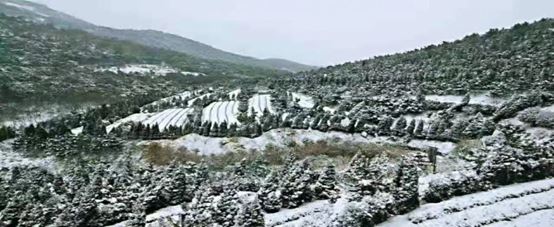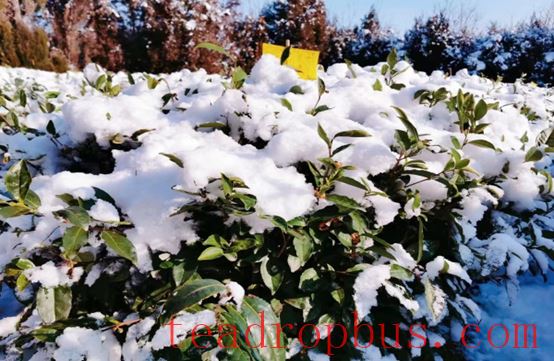According to a notice from the Rizhao City Meteorological Bureau, affected by strong cold air, there will be two precipitation events and two cold air processes this week, with the lowest temperatures expected to range between -10 to -11°C. To minimize damage and ensure stable Tea production, it is recommended that tea farmers and businesses take effective measures promptly to protect their tea gardens against cold and frost, reducing the impact of the disaster. Here are some guidance measures for cold and frost prevention in tea gardens:

1. Adequate Winter Watering. Tea freeze damage is influenced not only by low temperatures but also by drought conditions. Practice has shown that tea plants fear dry freezing most, and sufficient winter watering can withstand seven-tenths of disasters. Adequate winter watering in tea gardens is an important measure for frost protection in Shandong's tea areas. For winter watering, it should be done sufficiently, ideally penetrating about 30 cm deep, and timely, with watering preferably around the “Start of Winter” period. If early winter is dry, watering should be done earlier, and generally, watering after the ground has frozen is not advisable.
2. Mulching the Tea Garden (with Straw/Membrane). Mulching the rows in a tea garden can help resist drought and prevent freezing. Mulched tea gardens can increase soil temperature in winter, reduce the depth and severity of frozen soil, and maintain soil moisture. Experimental results show that mulching the rows in tea gardens during winter can increase soil temperature by 1.4°C, reduce the thickness of the frozen soil layer by about 15 cm, and increase soil moisture content by 5.7%. Mulching should be done around the “Start of Winter” period. Mulching after the ground has frozen may have the opposite effect. Mulching should be done after loosening the soil, with a thickness of about 10-15 cm being ideal, or black plastic sheeting can be used.
3. Covering the Canopy (with Straw/Shade Net). After covering the tea canopy with straw (or shade net), it can prevent frost and cold winds from affecting the plants, reduce water evaporation, and narrow the day-night temperature difference within the canopy. Covering should be done around the “Light Snow” period, and the cover should not be too tight, allowing 30%-40% of the leaves on the canopy to receive direct sunlight. Materials can include fresh pine branches, straw, or black shade nets with 40% light transmission.
4. Building Wind Barriers. Straw mats are the best material for wind barriers and can be reused for 2-3 years; plastic film can also be used to build wind barriers. Wind barriers should be built around the “Light Snow” period, with the mats or film placed north of each row of tea plants, the base secured with soil, and the mats positioned about 10 cm above the canopy, achieving both light penetration and wind protection. Wind barriers should also be built at the northern and western wind entrances of the tea garden.
5. Facility Protection. Erecting small arch-shaped greenhouses is the most ideal method for protecting young tea trees over winter. The greenhouses should be erected around the “Light Snow” period to prevent premature freezing of the young trees. In early spring, attention should be paid to adjusting the temperature inside the greenhouse to prevent the tea trees from sprouting too early and suffering from cold damage. Erecting large and medium-sized arch-shaped greenhouses is the best protective measure for mature tea gardens. Key points: First, choose a sheltered and sunny location to build a sturdy greenhouse. Second, apply fertilizer and water sufficiently before erecting the greenhouse. Third, prevent premature sprouting of tea buds in early winter, which can cause frost damage to the tea plants. Fourth, control appropriate temperature and humidity, ventilating scientifically. Fifth, do not allow the tea trees to grow too tall; trim them before covering with film.
6. Hilling-up Soil for Winter Protection. Practice has proven that hilling-up soil for winter protection of one-year-old tea trees is both labor-saving and reliable. First, prune the tea trees in late October, leaving the tea seedlings at a height of 17-20 cm. Then, hill-up soil during the “Light Snow” to “Heavy Snow” period, first to half the height of the seedling, and then leave only 1-2 leaves at the top. When hilling-up, use more dry or sandy soil, and less wet or clayey soil.
